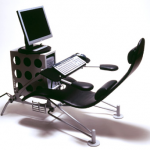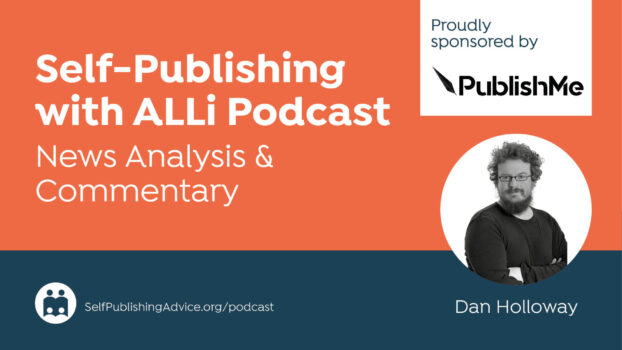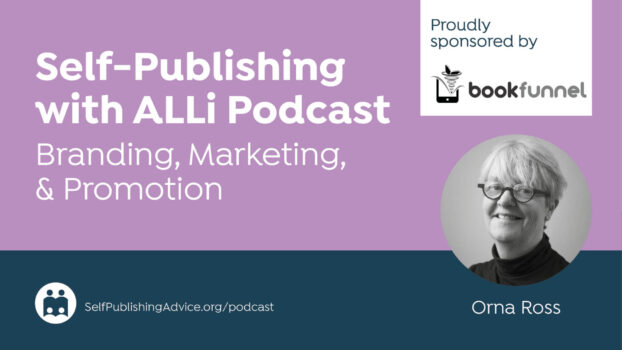Self-published children's author Karen Inglis provides a cautionary tale about back care for writers everywhere. We hope it wasn't back pain that caused her to name one of her children's novels Eeek!
Almost four years ago to the day, I stood up after a three-hour stint sitting at my desk to be greeted by a searing pain shooting down my left leg, coupled with a deep and decidedly uncomfortable sensation around my left buttock and lower back. ‘Wow! What’s that?’ I thought. I assumed that I must have been sitting in an odd position for too long or possibly was suffering the delayed after-effects of sleeping at an odd angle.
At that time I was combining day-job writing with my children’s fiction writing, so was super busy. With my mind half on other things I hobbled around a bit, made a sandwich, and then returned to my desk to work for the rest of the afternoon. Sitting made the pain go away at that stage. Little did I know that I had an injury that would turn my quality of life upside down for the next two years, requiring daily painkillers for 18 months, goodness knows how many scans, two injections into my spine, and two guided injections under CT scan into a nerve route. (The first one hit the nerve – Eeek!)
Back to that day…
The pain didn’t go away and over the course of the next ten days I continued to hobble around, and even go into meetings in town, all the time feeling extremely uncomfortable. (What was I thinking?!) It was only when bending to put my shoes on made me weep with pain that I realised that something was seriously wrong.
After various GP and physio visits, I finally had a scan where it was revealed that I had slipped a disc in my lower back: L5-S1 to be precise, apparently the most common disc to slip. The protrusion was pressing deep into the left sciatic nerve, which is an extremely large nerve that runs down the back of the leg. So here was the culprit and cause of the agony, which, unfortunately, also echoed all around my lower back and left buttock area in the form of ‘referred pain’.
So what exactly is a slipped disc?
Over to the medics now! Here’s a plain English explanation of a slipped disc (more accurately known as a ruptured disc) and a useful illustration showing how it can affect the sciatic nerve:
I wouldn’t wish the pain from a disc rupture on my worst enemy. It is ever-present, draining, debilitating and dominates every moment of every day. Worse still, you can’t sit for any length of time. Keeping moving is good, but also difficult. Swimming is pretty much the only exercise that is bearable, but only front or back crawl. It’s the worst of all possible worlds (unless you’re an Olympic crawl swimmer I guess!) In particular, even as you start to heal, the sciatic nerve can take a long time to be ‘retrained’ to forget to flare up. It’s as if it needs its own trauma counsellor!
So what has this got to do with writing?
Well, it seems that inordinately long periods of sitting are not good at all for our backs, because over time the muscles that support the spine and help keep our discs apart start to become lazy, or rather forget what they were designed to do. Endless sitting brings huge pressure to bear down the spine and, in the end, something will give unless you take steps to ensure that you (a) sit properly, using your core muscles to help support your spine (b) get up regularly and move around.
This moving around regularly is vital not only for the muscle activity in itself, but also to encourage blood flow to your lower back to keep it in good health. So whether you want to go for a walk for 10 minutes, make a cup of tea, put on a wash, or lie on the floor and do exercises that encourage you to use the muscles in your lower back – make sure you do so regularly! Most physios will recommend leaving your seat every 30 minutes – a hard call when you’re deep into your writing project. I can’t claim to stick to it strictly today but I do try to make sure I move around at least once every hour.One tip is to try setting an alarm to go off to get into the habit.
 There are plenty of other things to help keep your back in shape whilst sitting, such as posture and chair type, and some use magic balls to sit on. If you’re spending long periods of time sitting, I’d recommend reading up on all of this to keep your back in shape and avoid any chance of going through what I did. And if you’re experiencing dull lower back pain constantly, take action to change your habits right away!
There are plenty of other things to help keep your back in shape whilst sitting, such as posture and chair type, and some use magic balls to sit on. If you’re spending long periods of time sitting, I’d recommend reading up on all of this to keep your back in shape and avoid any chance of going through what I did. And if you’re experiencing dull lower back pain constantly, take action to change your habits right away!
As a starter here are couple of links, but you’ll find many more on Google:
• Tips on posture whilst sitting at your desk
• Some easy-to-follow exercises for lower back pain
The Prognosis
Many slipped discs will heal (by shrinking back in and away from the nerve) within six to eight weeks. I was one of the 1 in 10 unlucky ones where it took way longer, and I might have benefited from an operation early on to shave off the protruding disc.
I can now sit for extended periods, but I do still suffer from lower back pain and need to be careful. Like everyone, I have to remind myself to get up and get moving regularly. I also do regular yoga and gym. Oddly I can’t face going to the swimming pool to exercise! If anyone asks, I say it was time that ultimately healed me – but the physio exercises, Pilates and yoga all played an important part.
If you have any top tips for good back health for writers – or any horror stories for which you'd welcome sympathy! – please feel free to share them via the comments form below.







Hi,
I just discovered your website and read some blogs and I can’t stop myself from contacting you and giving you a big Thumbs Up for the quality work that you’ve been doing.
I am also writing about (PHYSIOTHERAPY) these days and I’ve written an article on the topics
I’ll be very honoured If you post my article on your blog.
Please let me know what you think, I can send the article today.
Best Regards,
aabella
THE BEST BACK ADVICE OF ALL!
I’ve written 1,000 pages of mystical memoirs, I hope to publish within a year. I worked on this for a decade, on an office chair behind a computer screen, for 6-9 hours a day. And I’m still working on it. I noticed that even using reading glasses leaves my eyes in pain, dry and unable to focus.
4 years ago I suddenly became paralyzed! My lower back and left leg were in excruciating agony. It was totally exhausting. I had to drag myself to the bathroom for 6 months, before there was any improvement. Painkillers, crutches and back brace were prescribed. I never take drugs but I did this time. A back brace did help a little. But the best aids I discovered myself:
After this sciatica started, I finally figured out (too late) that it was the long time in the same position of the chair causing it. I couldn’t work anymore. Getting a better office chair, adjusting it properly and getting up every hour to exercise helped, but not much. Finally, I decided to connect my 50 TV as a monitor, sit back 10 feet away on my Lazy-Boy reclining. In combined this with a wireless mouse and keyboard. Laying way back on the recliner and adjusting the keyboard angle helps my back tremendously. I don’t need glasses and I have no eye pain anymore! I also added two lazy-susans on my right and left, so I have everything at my fingertips and don’t have to get up, except to exercise. This setup worked remarkably well. My back has improved over the years to almost normal. But I keep the setup to prevent relapses. You should too.
[…] Writers: Mind Your Backs! […]
[…] Writers: Mind Your Backs! […]
Thank you for the advice! Hopefully, you can use the times you’re moving around to brainstorm, think, come up with ideas for your next project. I really appreciate the warning, along with your sharing your story. It’s a reminder to us all to make sure we stretch our legs every once in a while.
[…] Writers: Mind Your Backs! […]
Simply want to say your article is as surprising.
The clarity for your publish is simply spectacular and i can assume you are a professional in this subject.
Fine with your permission allow me to clutch your feed to stay up to date with forthcoming post.
Thank you one million and please continue the
gratifying work.
[…] Some words of warning for the desk bound who want to avoid back problems. Writers, mind your backs! […]
Thank you for the good writeup. It actually wwas a enjoyment account it.
Loook complex to far introduced agreeable from you! By the way, hhow could we bbe in contact?
Hi all, besides being a physiotherapist, I am also an EMT and so will say the following on DVT’s: DVT”s happen when blood circulation slows down due to:
1. inactivity in general (slow moving blood tends to clot more easily) or
2. a vessel kinking too long at the hips and knees ( think of a drinking straw bent in the middle and the drinker unable to suck the liquid past the bend in the straw very easily) ( and THAT would be us, hunched over our computers, fellow writers!) or
3. narrowing of the vessel from plaque buildup (more prevalent as we age); the roughened interior surface triggers a clot to start, or
4. blood pooling in the lower limbs as gravity pulls on it and keeps it from returning to the trunk area as quickly as it should.
Simple solutions are: fidget constantly at the foot and ankles; squeeze bum cheeks together (say, a dozen or so every hour, to use muscle contraction to help the blood to pump out of the lower limbs); elevate your legs on a stool or in a recliner, and finally, get up and walk around for a minute or two at least every hour.
These are general comments and if you have health concerns with back/leg pain or circulation, please get checked out by a doctor. ( It’s not a good idea to self-diagnose!) 😀
Thanks, Dianne – you are a fountain of knowledge – I had never heard the one about the vessel kinking too long at the hips and knees. That’s good to know. I’ll keep fidgeting from now on!
Yes, Karen. Continue to spread the word. When I was getting my book “The Woman at the Light” ready for the publisher, I was spending as long as six hours at the computer, and I’ve gone through much of what you have. What many of us should also think about is the danger of DVT (deep vein thrombosis) for sitting so long.
That’s a good point, Joanna – I don’t know whether Dianne can add any more on that. I certainly have wondered about it myself… I remember a few years ago doing long stints at my desk when deep into writing and thinking I could feel the circulation in my legs playing up.
All – I’m out all day at a school event tomorrow so apologies if I don’t get to reply if there are any comments tomorrow – I’ll check the page out on Saturday.
Great post, Karen! We all need to know that sitting tends to promote disc bulges, as does any forward bending at the waist. I am a physiotherapist and I see at least one patient with a disc bulge/rupture everyday. in my clinic.
There is a very effective treatment regime for it called McKenzie, and I couple this with acupuncture and EMS, with the patient lying facedown over a pile of pillows under their waist.for about 15-20 minutes, followed by a series of press-ups ( not push-ups) which are the “back extensions” as shown in the clickable link to back exercises that you included in your post. This treatment regime can easily be modified to a home program for people to do on a maintenance or preventive basis.
Writers, because of long, consecutive hours spent sitting are very prone to this condition. It’s one of the dangers of the job, and I’m glad to see that you brought it up. Thanks for sharing!
Thanks for the additional info, Dianne – I’m glad that we have an expert in our midst. I am now off to Google the McKenzie regime!
Hi Dianne – someone has also posted here about DVT and sitting for too long. If you’ve any comments on that please feel free to add, albeit I appreciate that it’s outside your area of expertise!
MacKenzie exercises are great for the lower back, but best to get the osteopath’s advice on using them, just to check they are right for you.
I have ligaments damage which can take up to 2 years to get better, if it does. 🙂 Mackenzie not right at all for this.
Many thanks Karen: my back, though not as bad as yours, sounds has developed very similar left-side of spine symptoms (eg that pain down the leg!) which got worse when doing a big edit recently, and which respond well to gentle yoga … I defintely need to get back to doing timed breaks from the sitting.
Also, for those who do yoga, go easy on the lower back exercises/poses: I Made my back worse by over-enthusiastic back participation last week, and have learned now to count myself among the class members who have “issues’ around their backs.
Thanks for the additional advice for everyone, Clare. You’re right – in the case of yoga (and Pilates for that matter) it’s a question of only doing as much as feels right if you have symptoms. It would be useful to have a physio pop in with some comments here – any takers out there?! I hope you’ll continue to keep your pain at bay, Clare!
I’ve been suffering recurring pain in my right leg since I hurt my back last May milking cows. It definitely causes issue with the whole writing thing, and while a chiropractor helps temporarily, it’s never been a long-term fix. Time to try the advice in those articles! Thanks for sharing, Karen.
Good luck Samantha – There are physio exercises you can do which train the nerve to stop flaring up, by gently provoking it – but it takes time. It may be worth asking a physio in case the pain is a ‘memory’ rather than due to nerve being aggravated by a disc.
On a separate note, strange how there seems to be a ‘farming’ theme creeping in here! I wonder if that farmer Dan O’Neill has passed his gift on to any sons?!!
Thanks for sharing your personal experience, Karen. This has come at just the right time for me, as I am starting to seize up a bit, so this is the wake-up call I needed! Now sitting at a readjusted chair with my screen in a different place, as advised in one of the useful links.
It’s actually good for me too – I’ve sat much longer today than I should have done! At least I’ll be standing again all day tomorrow with my school event!
Hi
Yes ‘slipped disc’ is indeed a bit of a lazy term as it’s actually a rupture of the disc wall and the gel inside the disc that leaks/ protrudes out…. I can’t tell from what you say whether this is what happened with you but if it is how intriguing that it could just be pushed back in! That farmer could be making a fortune! 🙂
That farmer – Dan O’Neill did indeed make a fortune. He had no fixed charge, but invited people he helped to make a cash donation – whatever they considered fair – which went straight into his back pocket. He had a queue of sufferers at the farm every day. He also repaired the backs of animals. While I was there someone arrived with a bull on a trailer, roaring in agony (the bull, not the trailer). All the people had to wait while he attended to the bull! He used his (tax free) income to buy racehorses, and had one famous one call Danoli. He died a few years back (the farmer, not the racehorse).
Sounds as if his story should be made into a film 🙂 (Let’s hope HMRC doesn’t read this thread!)
I live in Ireland, and so did Dan O’Neill – well out of reach of HM and her Chancellor!
Dan O’Neill is still breathing and setting backs – he just did one for a friend.
Hi Karen,
I hope that your back is healing and that your pain is receding. I do sympathise – and empathise, too for I had a very similar condition last year. It was so restricting – I could only walk with a stick, and then only for short distances. And I’m sure you discovered how wearying constant pain can be.
When it all began, I tended to think I was making a fuss, and so tried to battle through it, just as you did. Not a good idea though!
Anyway, joy of joys, I am absolutely fine now. I practice Yoga, and try to always be aware of my posture when sitting, and to take regular breaks. But, as you say, not always easy when you’re immersed in your writing, and in another place and time! I also bought myself a new chair, and set it to the right height for my desk, and lap top.
I really enjoyed your article and wish you success in all your writing.
Sue
Many thanks – glad to hear you’re okay now, Sue. I agree that Yoga is good. I also have a new and rather expensive chair – I’m not sure how much it helps but I suppose it must do!
One thing my physio said was talso to make sure I don’t sit too upright when at my screen, which is something I started to do after the injury – and then ended up with over-tight back muscles that caused additional aches and pains! So it’s using the core and sitting back into the chair (whilst trying to write a best seller 😉
Hi Karen, I have 3 “slipped discs”. I’ve had them for many years. I put the term in inverted commas because I’ve been told that that’s not what they are. But that’s what they feel like and they behave like discs that have slipped. The first one is a golf injury, right between my shoulder blades. I lived with that one for years. Then I got another, right in the middle of my back and a third one in my neck. At that stage I had to do something about it! I went to the doctor. He said medical science was not good with backs, and advised me to go to a famous “bone setter” – a farmer who lived in the heart of the countryside. Dan O’Neill was the farmer’s name. He found the three discs with his fingers and pushed them back into place. Just like that! I’ve had very little pain from them since, even though I spend hours every day sitting at my keyboard.